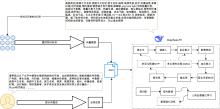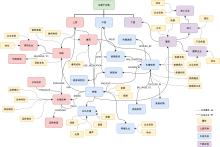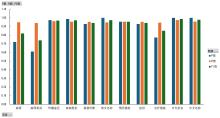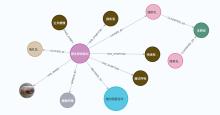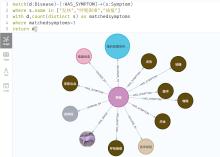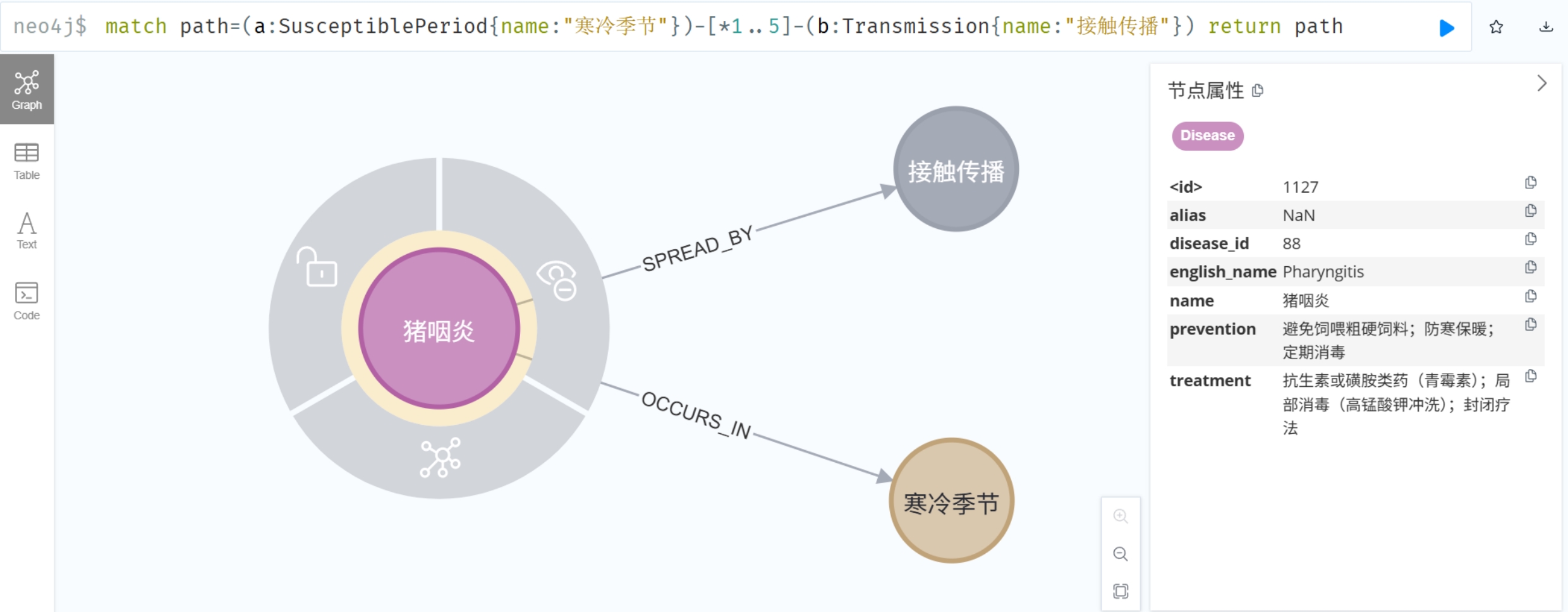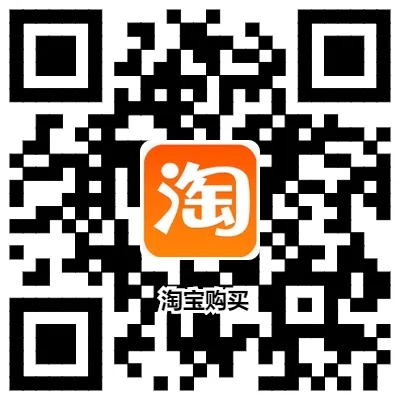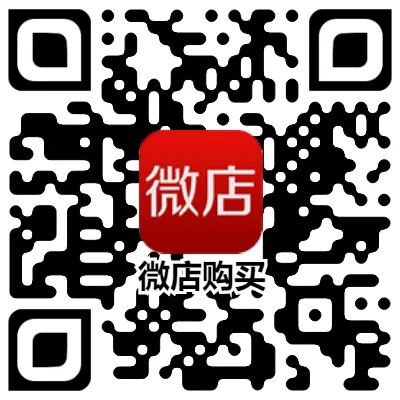| 1 |
秦小林, 古徐, 李弟诚, 等. 大语言模型综述与展望[J]. 计算机应用, 2025, 45(3): 685-696.
|
|
QIN X L, GU X, LI D C, et al. Survey and prospect of large language models[J]. Journal of computer applications, 2025, 45(3): 685-696.
|
| 2 |
王萌, 王昊奋, 李博涵, 等. 新一代知识图谱关键技术综述[J]. 计算机研究与发展, 2022, 59(9): 1947-1965.
|
|
WANG M, WANG H F, LI B H, et al. Survey on key technologies of new generation knowledge graph[J]. Journal of computer research and development, 2022, 59(9): 1947-1965.
|
| 3 |
徐增林, 盛泳潘, 贺丽荣, 等. 知识图谱技术综述[J]. 电子科技大学学报, 2016, 45(4): 589-606.
|
|
XU Z L, SHENG Y P, HE L R, et al. Review on knowledge graph techniques[J]. Journal of university of electronic science and technology of China, 2016, 45(4): 589-606.
|
| 4 |
刘峤, 李杨, 段宏, 等. 知识图谱构建技术综述[J]. 计算机研究与发展, 2016, 53(3): 582-600.
|
|
LIU Q, LI Y, DUAN H, et al. Knowledge graph construction techniques[J]. Journal of computer research and development, 2016, 53(3): 582-600.
|
| 5 |
车万翔, 窦志成, 冯岩松, 等. 大模型时代的自然语言处理: 挑战、机遇与发展[J]. 中国科学: 信息科学, 2023, 53(9): 1645-1687.
|
|
CHE W X, DOU Z C, FENG Y S, et al. Towards a comprehensive understanding of the impact of large language models on natural language processing: Challenges, opportunities and future directions[J]. Scientia sinica (informationis), 2023, 53(9): 1645-1687.
|
| 6 |
XU D R, LI X H, ZHANG Z H, et al. Harnessing large language models for knowledge graph question answering via adaptive multi-aspect retrieval-augmentation[J/OL]. arXiv, 2024. .
|
| 7 |
李晓理, 刘春芳, 耿劭坤. 知识图谱与大语言模型协同共生模式及其教育应用综述[J/OL]. 计算机工程与应用, 2025: 1-15. .
|
|
LI X L, LIU C F, GENG S K. A survey of the collaborative symbiosis mode between knowledge graph and large language model and its education application[J/OL]. Computer engineering and applications, 2025: 1-15. .
|
| 8 |
韩普, 陈文祺, 叶东宇. 面向中文电子病历的多模态知识图谱构建方法研究[J]. 图书情报工作, 2024, 68(23): 30-40.
|
|
HAN P, CHEN W Q, YE D Y. Research on multimodal knowledge graph construction method for Chinese electronic medical record[J]. Library and information service, 2024, 68(23): 30-40.
|
| 9 |
毛瑞彬, 朱菁, 李爱文, 等. 基于自然语言处理的产业链知识图谱构建[J]. 情报学报, 2022, 41(3): 287-299.
|
|
MAO R B, ZHU J, LI A W, et al. Construction of knowledge graph of industry chain based on natural language processing[J]. Journal of the China society for scientific and technical information, 2022, 41(3): 287-299.
|
| 10 |
姚奕, 陈朝阳, 杜晓明, 等. 多模态知识图谱构建技术及其在军事领域的应用综述[J]. 计算机工程与应用, 2024, 60(22): 18-37.
|
|
YAO Y, CHEN Z Y, DU X M, et al. Survey of multimodal knowledge graph construction technology and its application in military field[J]. Computer engineering and applications, 2024, 60(22): 18-37.
|
| 11 |
陈怡然, 熊竹青, 周脚根, 等. 畜禽养殖业数据应用展望和问题分析[J]. 中国科学院院刊, 2024, 39(11): 1982-1993.
|
|
CHEN Y R, XIONG Z Q, ZHOU J G, et al. Prospect and problem analysis of industry data application in livestock and poultry breeding[J]. Bulletin of Chinese academy of sciences, 2024, 39(11): 1982-1993.
|
| 12 |
刘烨宸, 李华昱. 领域知识图谱研究综述[J]. 计算机系统应用, 2020, 29(6): 1-12.
|
|
LIU Y C, LI H Y. Survey on domain knowledge graph research[J]. Computer systems & applications, 2020, 29(6): 1-12.
|
| 13 |
NGUYEN H L, VU D T, JUNG J J. Knowledge graph fusion for smart systems: A Survey[J]. Information fusion, 2020, 61: 56-70.
|
| 14 |
张才科, 李小龙, 郑胜, 等. 基于大语言模型的知识图谱构建及应用研究[J]. 计算机科学与探索, 2024, 18(10): 2656-2667.
|
|
ZHANG C K, LI X L, ZHENG S, et al. Research on construction and application of knowledge graph based on large language model[J]. Journal of frontiers of computer science and technology, 2024, 18(10): 2656-2667.
|
| 15 |
ZHAO W X, ZHOU K, LI J, et al. A Survey of Large Language Models[J/OL]. arXiv, 2025. .
|
| 16 |
周正达, 王昊, 汪琳, 等. ChatKG: 一种基于大语言模型和提示工程的非遗知识图谱构建框架: 以中国非遗陶瓷制作工艺为例[J/OL]. 图书馆杂志, 2025: 1-30. .
|
|
ZHOU Z D, WANG H, WANG L, et al. ChatKG: A framework for constructing intangible cultural heritage knowledge graphs based on large language model and prompt engineering: A case study of Chinese intangible cultural heritage ceramics craft[J/OL]. Library journal, 2025: 1-30. .
|
| 17 |
陈宋生, 王明. 基于大语言模型的财会知识图谱构建及应用展望[J]. 会计之友, 2025(5): 152-161.
|
|
CHEN S S, WANG M. Construction and application prospect of accounting knowledge map based on large language model[J]. Friends of accounting, 2025(5): 152-161.
|
| 18 |
韦一金, 陈彦清, 王秀东, 等. 基于大语言模型的《中国小麦品种志》信息提取[J]. 数据与计算发展前沿(中英文), 2025, 7(1): 175-185.
|
|
WEI Y J, CHEN Y Q, WANG X D, et al. Information extraction from Chinese wheat varieties journal based on large language model[J]. Frontiers of data & computing, 2025, 7(1): 175-185.
|
| 19 |
皮乾坤, 卢记仓, 祝涛杰, 等. 一种基于大语言模型增强的零样本知识抽取方法[J/OL]. 计算机科学, 2025: 1-11. .
|
|
PI Q K, LU J C, ZHU T J, et al. A zero-shot knowledge extraction method based on large language model enhanced[J/OL]. Computer science, 2025: 1-11. .
|
| 20 |
WANG B, XU C, ZHAO X M, et al. MinerU: An open-source solution for precise document content extraction[J/OL]. arXiv, 2024. .
|
| 21 |
张文杰. 提示词治理: DeepSeek等国产大模型内容生成的人机协同模式[J/OL]. 苏州大学学报(哲学社会科学版), 2025: 1-12. .
|
|
ZHANG W J. Prompt governance: A study on human-machine collaboration models for content generation in the era of large language models baesd on DeepSeek[J/OL]. Journal of Soochow university (philosophy & social science edition), 2025: 1-12. .
|
| 22 |
SUN J, PAN Y T, YAN X H. Improving intermediate reasoning in zero-shot chain-of-thought for large language models with filter supervisor-self correction[J]. Neurocomputing, 2025, 620: 129219.
|
| 23 |
ADAMS G, FABBRI A R, LADHAK F, et al. From sparse to dense: GPT-4 summarization with chain of density prompting[J]. Proceedings of the conference on empirical methods in natural language processing conference on empirical methods in natural language processing, 2023, 2023(4th New Frontier Summarization Workshop): 68-74.
|

 )
)
 )
)



